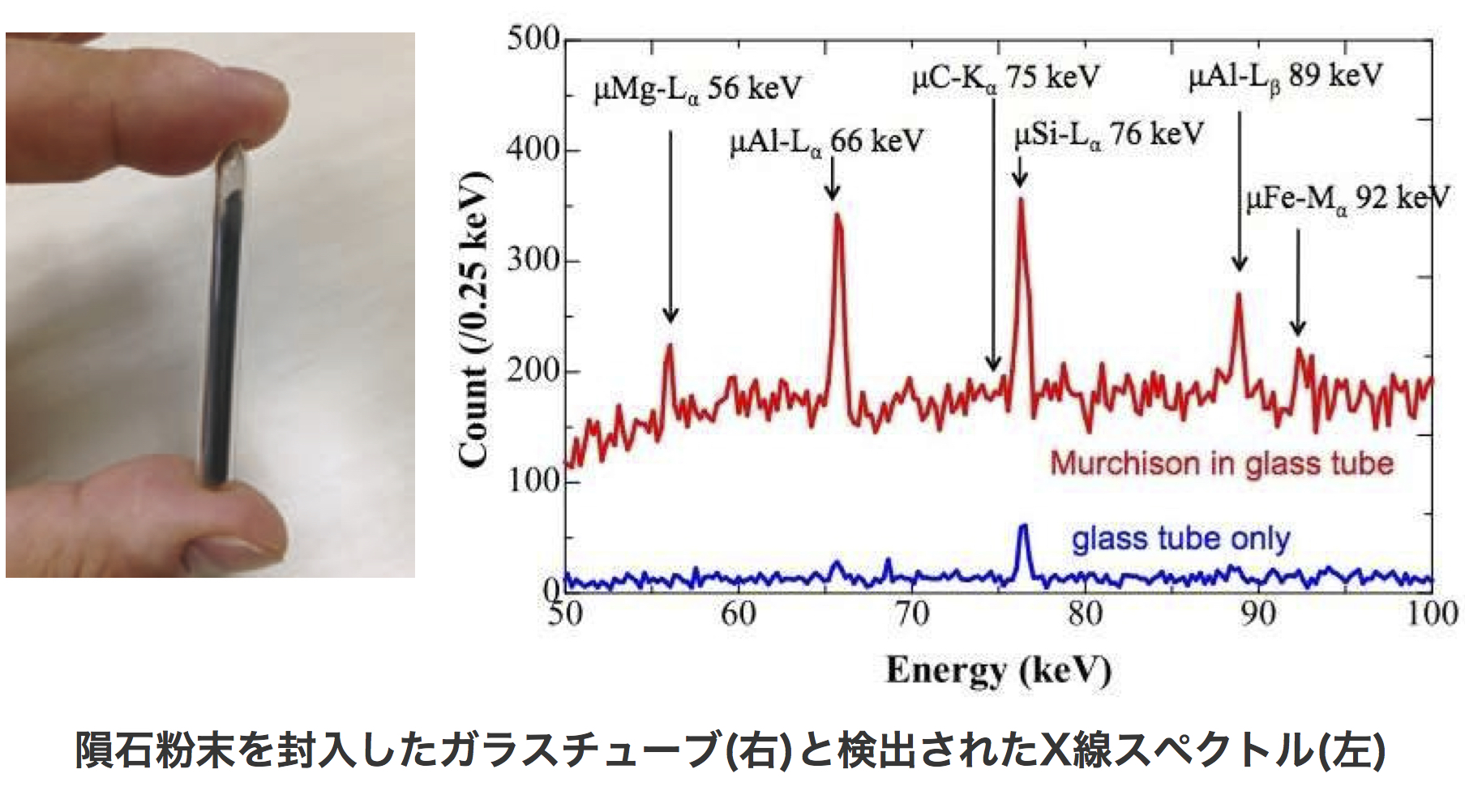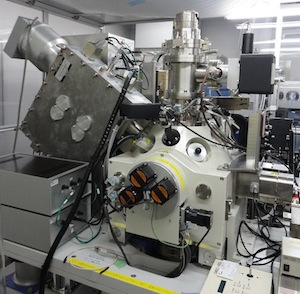
Terada Lab. Home > Research > Earth environment and evolution
Development for next-generation analysis
Non-destructive analysis of extraterrestrial materials with a muon beam

Negative muon (μ-) is a lepton with a charge and a mass approximately 200 times heavier than the electron. Muons can reach deeper regions of materials due to their large mass, and muonic X-rays are intense enough to pass through the target material from the much deeper interior than the characteristic X-rays of electron transitions.
We are developing a new X-ray fluorescence spectroscopy technique using a muon beam for non-destructive analysis of the chemical composition of meteorite samples.
In the experiment with the intense pulsed muon source, J-PARC MUSE (Japan Proton Accelerator Research Complex, MUon Science Establishment), we successfully demonstrated a depth-profile analysis of light elements (B, C, N and O) from several mm-thick layered materials and non-destructive bulk analyses of meteorites containing organic materials. Furthermore, in the experiment assuming non-destructive elemental analysis of future return samples that are expected to be recovered by Hayabusa-2 and OSIRIS-REx, we successfully detected Mg and Fe peaks from meteorite powder enclosed in glass tubes.
Secondary Neutral Mass Spectrometer (MULTUM-SNMS)

Sub-millimeter size crusts in polymict breccia provide us an important clue to deciphering the planetary evolution process of the early solar system. SIMS (Secondary Ion Mass Spectrometer) has been widely used for the analysis of fine-scale structures.
The disadvantage of SIMS is the low ionization yield, and therefore it is difficult to conduct a high spatial resolution analysis. In collaboration with Mass Spectrometry Group at Osaka University, we have been developing a laser post-ionization Secondary Neutral Mass Spectrometer (MULTUM-SNMS) to accomplish a sub-micron scale in-situ isotopic analysis.
